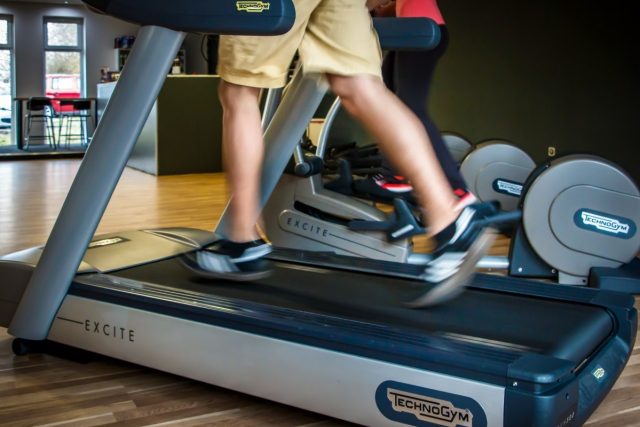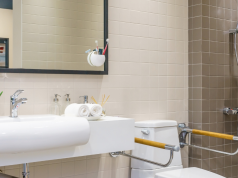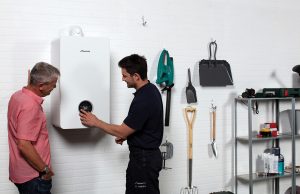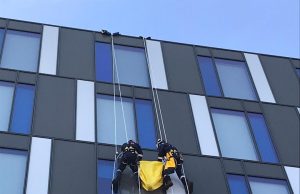
To purchase new fitness equipment is something you should somewhat carefully plan. Yes. As silly as that might sound but if you fail to prepare it might cost you both nerves and funds.
- Do you have its location well-thought of?
- Are you aware of power requirements and consumption?
- Can you ensure the electrical safety in your home?
Units such as treadmills, elliptical and suspension trainers require a stable and ground power outlet and that’s why we’ve gathered the following electrical guidelines for one of the most used types of fitness equipment – the treadmill.
What you should know about power outlets and treadmills:
- Best option: Sturdy grounded, dedicated circuit at 20 Amps and 120 volts.
Shared circuits could also work but in order to use your fitness gear problem free, that’s something you might want to look into. - Next option: Still a dedicated circuit but 15 Amps versus 20.
If you go with 15 Amps, then risks will slightly riskier because 15 Amp’ed ones use a lighter gauge then their highed counterpart.
“If you do happen to used it via a circuit which is not dedicated, then you might experience an unpleasant glitch here and there. That’s why it is best that you don’t use your fitness equipment with a power outlet that supplies electricity to other household appliance, lamps or etc.” says Atiya Abbas, from ExerciseCenter.co.uk.
What type of power sources you should avoid?
Keep your treadmill safe from:
- GFCI (ground fault circuit interrupter) outlets/circuits.
Treadmills need a steady circuit flow and secuensted power shortages could lead to damaging of your fitness unit. - Surge diverters cause risk for fitness equipment.
They would limit the voltage flowing to your treadmill by either stop or limit the circuit supplied to your fitness when above a certain threshold. - Extension cords and fitness gear.
When people fail to place the treadmill at a near-outlet location, extension cords often come to use. However, those can sometimes cause voltage drops, which might result in pricey dimage for your fitness unit. - Outlets sharing the same circuit as dimmers and other switches.
Electricians will often connect outlets and lighting controls to the same circuit. That’s why units such as dimmers that reduce the circuit voltage which can also affect your treadmill.
What are the risks of neglecting the recommended power requirements.
Outlets that lack the sufficient amount of power like those below 110 Voltas can cause a glitch in the workflow of a treadmill belt, especially when you have elevation on.
Well-powered cardio exercise gear can last for years to come, while a simple glitch in power supply can cause a ton of nerves and money.
What are the electrical requirements to power a treadmill at home?
The specific requirements can vary depending on the manufacturer, country and type of treadmill. Although the requirements can vary, most units will run on 120 volts via a dedicated and grounded power socket.
According to out of the box manuals, most manufacturers recommend the use of a surge compressor in case of power shortages or current fluctuations. If you have doubts that your electrical installation can support the requirements of a treadmill, then you should book a professional electrician.
When it comes to Volts
The NordicTrack, Weslo, and ProForm brands are built and sold by the exercise equipment manufacturer Icon Health & Fitness and they all require a steady 120-volt circuit, while other brands such as Smooth Fitness run their units at 110 volts.
In the United Kingdom, residential power supply comes at 230 V, which means that if the unit you’ve bought was manufactured in the US, you will need the appropriate adapter or otherwise, you will surely damage it beyond repair.
Although the standard in the U.S. is at 120 volts, the actual voltage will range anywhere between 116 and 123 volts, which means that regardless if the treadmill you bought is labeled for 110, 115 or 120 volts currents, it will work with any residential power supply.
Why you should use a grounded socket
The main reason behind the required use of grounded outlets is to protect anybody using the treadmill from being stun as a result of short circuiting. Grounded sockets have a third prong and attempts to dismantle or alter it in any way are absolutely forbidden for this way you put your own health and safety at risk.
If you’re unsure if you have a properly grounded socket, you should again, get in touch with an electrical tradesman and get on installed.
What does a surge compressor need
The main purpose of this type of units is to protect your exercise gear from any risky fluctuations in power supply. According to Westline Electrical Services most out of the box manuals recommend the use of a single-socket surge suppressor, at best with a UL 1449 Transient Voltage Surge Suppressor (TVSS) rating.
The unit should use a UL suppressed voltage rating of no more than 400 volts and an electrical rating of 120 volts where amps should be at 15. If you don’t want to risk your exercise gear – always us the surge suppressor.
Cautionary advice and final remarks
- You should always use a socket with dedicated circuit, otherwise you risk damaging your treadmill, unless you have a surge suppressor.
- Do not use an extension cord.
- Treadmills are not made to work with GFCI or “Ground Fault Circuit Interrupt” outlets, because they are extremely sensitive to current fluctuations.













